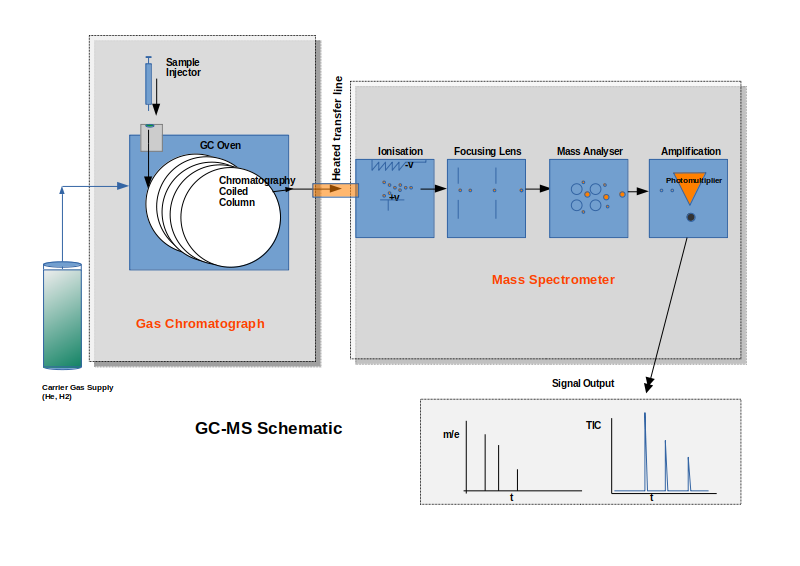There has been much discussion recently on LinkedIn (see ref 1 and ref 2) about using GC-MS to analyse marine bunker fuels and whether this should be a routine test.
Firstly GC-MS is a fairly generic term covering a variety of techniques within that label such as
- Headspace GC-MS
- Direct Injection GC-MS
- Direct injection GC-MS with derivatisation of the sample
- Sample extraction with or without sample derivatisation GC-MS (“polars” analysis)
All of these will provide some information about the composition of the fuel, but none will provide every bit of compositional information.
What is GC-MS?
This is a technique which first separates the individual components by gas chromatography (GC). The sample is evaporated and the vapour flows along a long coated column. This has a non-volatile organic coating which separates the components out, nominally in terms of boiling point, although size and shape of the molecule also play a part.
The components are identified using mass spectrometry (MS). The mass spectrum is a chemical fingerprint of the compound, made up of fragments of the molecule of specific masses.

GC-MS only analyses volatile and semi-volatile compounds, so the whole boiling range of distillate fuels or distillate blendstocks can usually be covered. Residual fuels, well, the clue is in the name, they have a lot of high-boiling, high molecular weight components that won’t get analysed by GC-MS. Other methods of analysis are needed to examine the residual portion of the fuel.
Looking at the techniques listed above, I will now list the main advantages and drawbacks to each of these techniques.
